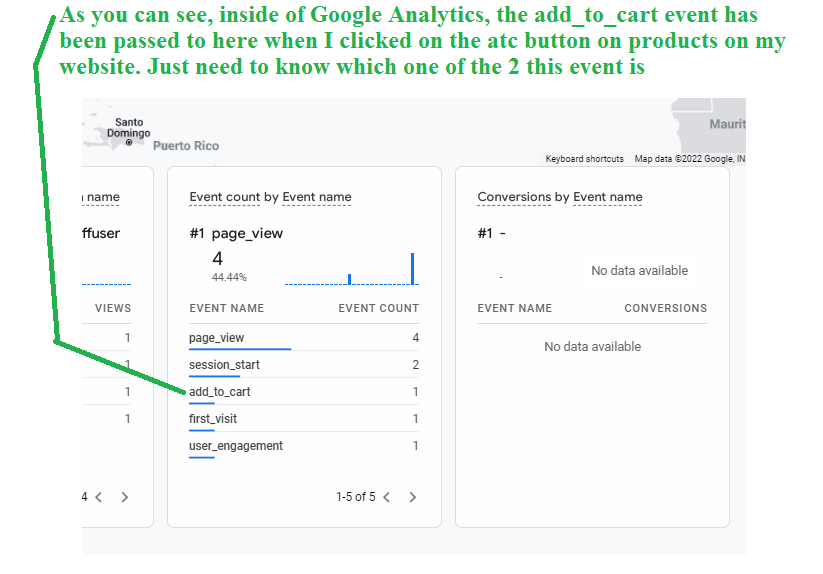Comprehending the Power of Remarketing In Google Analytics
Utilizing Remarketing in Google Analytics: A Comprehensive Overview
Using remarketing in Google Analytics provides companies a strategic edge in getting to out to potential customers. This guide will shed light on the essential steps entailed in utilizing the full potential of remarketing in Google Analytics, leading to enhanced advertising results.
Comprehending Remarketing in Google Analytics
Remarketing in Google Analytics allows companies to tactically target users that have previously interacted with their internet site or mobile application. By leveraging data from Google Analytics, businesses can create personalized remarketing checklists based upon customer actions, such as web pages visited, activities taken, or details objectives accomplished. This powerful tool allows businesses to re-engage with customers who have revealed rate of interest in their product and services, ultimately raising the chance of conversion.
Recognizing the various kinds of remarketing methods is vital for an effective campaign - What Is “Remarketing” In Google Analytics?. Google Analytics offers numerous choices, consisting of standard remarketing, vibrant remarketing, and remarketing checklists for search ads (RLSA) Each kind serves a distinct purpose and can be tailored to meet certain advertising and marketing goals
Additionally, evaluating the performance of remarketing projects is necessary for enhancing results. Google Analytics provides important insights into the efficiency of various remarketing techniques, permitting companies to make data-driven decisions and fine-tune their targeting method. By constantly keeping an eye on and changing remarketing initiatives based upon analytics information, companies can take full advantage of ROI and drive success in their advertising initiatives.
Establishing Remarketing Projects

After establishing up audience lists, the next action is to connect Google Analytics with Google Advertisements. By linking these 2 platforms, companies can perfectly move audience checklists from Google Analytics to Google Advertisements for remarketing purposes. This integration enables more precise targeting and far better project efficiency.
Once the accounts are connected, organizations can develop remarketing campaigns in Google Advertisements making use of the audience lists formerly defined in Google Analytics. These campaigns can be customized with details ad creatives, messaging, and bidding process approaches to successfully re-engage with previous site visitors and drive conversions. By following these steps, services can utilize the power of remarketing to boost their advertising and marketing initiatives and boost ROI.
Making Use Of Audience Segmentation Techniques

Predefined sectors in Google Analytics enable you to rapidly analyze usual target market classifications fresh individuals, returning users, or users that finished a particular objective on your site. Custom-made sections, on the other hand, enable you to produce unique sections based upon details requirements that are important to your business objectives. Dynamic remarketing listings automatically readjust based upon customer behavior, revealing tailored advertisements to individuals who have interacted with your site in certain ways.
Analyzing Remarketing Efficiency Metrics
Upon evaluating the performance of remarketing projects in Google Analytics, advice the evaluation of crucial efficiency metrics supplies important insights into audience engagement and conversion prices. By delving into metrics such as click-through prices (CTR), conversion rates, price per purchase (CERTIFIED PUBLIC ACCOUNTANT), and return on ad invest (ROAS), marketers can assess the success of their remarketing initiatives. Assessing these metrics makes it possible for online marketers to optimize projects, improve target market targeting, and assign budget plans efficiently to enhance general remarketing efficiency.
Maximizing Remarketing Strategies
When refining remarketing techniques in Google Analytics, concentrating on audience segmentation is critical for achieving project success. By splitting your target market right into specific sections based upon their habits, demographics, or interests, you can customize your advertisements better per group. This targeted technique boosts the chance of involving customers who have actually currently revealed rate of interest in your services or products, leading to higher conversion rates.
An additional essential aspect of optimizing remarketing approaches is constantly screening and refining your projects (What Is “Remarketing” In Google Analytics?). A/B testing various advertisement creatives, messaging, or deals can assist you identify what resonates ideal with your target market and drives one of the most conversions. By analyzing the efficiency of these tests in Google Analytics, you can make data-driven choices to maximize your remarketing initiatives further
In addition, leveraging dynamic remarketing can considerably enhance your project results. This function enables you to reveal individualized ads to individuals based on their past interactions with your web site, showcasing solutions or products they have actually previously seen. By delivering tailored web content to customers based upon their habits and rate of interests, dynamic remarketing can assist enhance interaction and drive conversions.
Verdict
Finally, harnessing remarketing in Google Analytics is a strategic technique to target individuals that have actually previously engaged with an internet site. By producing personalized audience checklists and utilizing target market segmentation methods, services can maximize remarketing advocate raised conversion rates. Examining efficiency metrics and constantly optimizing approaches are important for making the most of the efficiency of remarketing efforts.
Google Analytics provides different alternatives, including click site basic remarketing, vibrant remarketing, and remarketing checklists for search advertisements (RLSA)After setting up target market lists, the following action is to link Google Analytics with Google Advertisements. By connecting these two systems, companies can effortlessly move audience checklists from Google Analytics to Google Advertisements for remarketing objectives.As soon as the accounts are connected, businesses can produce remarketing projects in Google Advertisements making use of the target market lists formerly defined in Google Analytics.When refining remarketing methods in Google dig this Analytics, focusing on audience segmentation is extremely important for achieving project success.